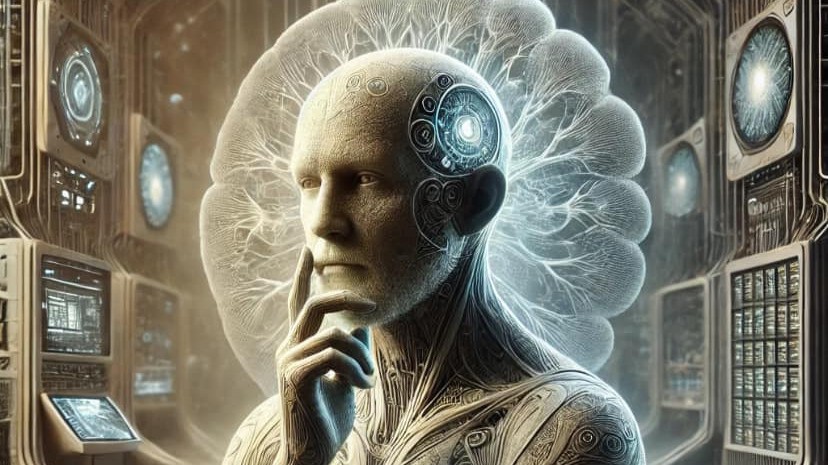Artificial intelligence (AI) is rapidly evolving to mimic human thought processes, bridging the gap between biology and technology and challenging traditional concepts of intelligence. New AI models, inspired by the human brain’s mechanisms, aim to replicate how humans learn, reason, and create, potentially redefining intelligence itself. This development, known as biomimetic AI, leverages principles such as active inference to operate more like biological organisms, promising greater energy efficiency and closer alignment with human cognition.
AI’s ability to simulate human intelligence processes—learning, reasoning, problem-solving, perception, and language understanding—has already transformed many fields. Machines now perform complex tasks once thought exclusive to humans, such as playing strategic games, diagnosing diseases, and composing music. These advances prompt a reevaluation of intelligence, raising questions about whether it is merely a set of replicable skills or if it includes uniquely human qualities like emotional depth and creativity.
When it comes to creativity, AI demonstrates a nuanced performance. Research comparing AI models like GPT-3.5-turbo, GPT-4, and GPT-4o with humans across various creative tasks reveals that AI can outperform humans in divergent thinking, convergent thinking, and insight problem-solving. However, AI still struggles with creative writing and tasks requiring emotional nuance and the ability to generate novel, contextually rich ideas. Unlike humans, AI shows lower forward flow in free association and less accuracy in tasks demanding representational change, indicating a lack of genuine creative thinking processes.
Moreover, AI’s creative output often results from non-creative mechanisms such as pattern recognition and data recombination rather than authentic insight or emotional engagement. This limitation affects AI’s ability to select the most creative ideas effectively, as it exhibits higher decision error scores in creative selection tasks. Thus, while AI can mimic certain aspects of creativity, it does not fully replicate the depth and diversity of human creative thought.
The interaction between humans and AI in creative processes further complicates the picture. Studies show that human-AI co-creation initially boosts innovation by combining human intuition with AI’s analytical power. AI can serve various roles in this collaboration, such as a creative partner inspiring ideas, an analyst uncovering insights from vast data, or a coach providing feedback and guidance. This synergy can accelerate problem-solving and diversify perspectives, enhancing collective creativity.
However, this boost tends to plateau over time. Human-only teams continue to improve creatively, developing richer and more diverse ideas, while human-AI teams often experience a stagnation in creative growth. Exposure to AI-generated ideas increases the diversity of collective ideas but does not necessarily enhance the creativity of individual ideas. This suggests that AI contributes novel variations but may lack the ability to sustain long-term creative evolution without human insight and judgment.
Another critical aspect is the risk of homogenization. Without careful human oversight, AI’s influence could lead to a narrowing of creative expression, as AI tends to generate ideas based on learned patterns rather than true originality. Effective use of AI in creativity requires balancing automation with human critical thinking, creativity literacy, and ethical considerations to preserve the richness of human innovation.
In conclusion,
AI’s mimicry of human thought and creativity represents a profound technological and philosophical shift. While AI excels in structured problem-solving and can augment human creativity through collaboration, it still falls short in replicating the emotional depth, originality, and evolving diversity that characterize human creative processes. The future of intelligence and creativity likely lies in a complementary relationship where AI amplifies human potential without replacing the uniquely human elements of thought and imagination. This evolving partnership challenges us to rethink intelligence, creativity, and the roles humans and machines will play in shaping innovation.

